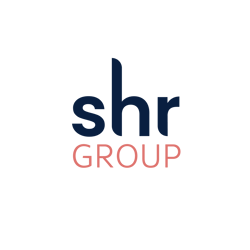
By Casey Hesson
Revenue management technology isn’t new. In fact, it’s over 30 years old. So it’s a bit shocking to find out that less than 3% of hotels are actively using a revenue management system (RMS). But where some people might see this as a problem, Vivek Bhogaraju, Director of Revenue Management Solutions with Expedia Group, sees an opportunity.“So all these decisions are being made for the vast majority of hotels, close to 97%, but they're made without using data-driven decision making, without using scalable techniques such as technology ... that might help hotels to make better decisions,” Vivek said on The Hotel Tech Podcast. “I see it as an opportunity. I see it as an opportunity for us to fundamentally rethink what we can do differently.”
Every room left unsold at the end of the night is lost revenue you can’t get back, which is why maximizing revenue every day is essential for staying competitive in almost every market. Vivek provides a few important steps to keep in mind when using an RMS to enhance your business.
Start with your data
It’s easy to get wrapped up in creating fancy reports that look pretty. But first, you need to understand the data you’re getting and verify that it’s correct. It doesn’t matter how nice your dashboard looks if the numbers are old or you don’t understand them. Making sure that you know where your data comes from, that it’s recent, and that it’s sustainable, are great first steps.
Know your guests
Once you verify that your data is correct, you can start to understand the customers who are staying with you. By using segmentation to divide your customers into groups with common characteristics, you get a clear sense of what types of guests are staying at your hotel, and where they’re coming from. When you understand who your customers are, you’ll know who you’re competing for and where you have gaps to fill in demand.
Start with small experiments
Now that you know who you’re targeting, the hard part is finding a strategy to get those groups to actually book with you. It’s hard to predict how customers will react to change, so it’s important to start with small, controlled experiments. Whether you’re thinking about a price increase, price adjustment, or a campaign, start by making small changes to see how it will affect revenue.
When starting off, it’s important to remember that using an RMS isn’t a quick fix. It’s a journey that takes time and discipline. Almost all hotels have access to the same technology and strategies. It’s the ones who use those tools to make good, data-driven decisions in ways that work for their business that see positive results.
“When I speak to our hotel partners, I see no matter where they are located, how big their size, it could be a standalone hotel with very few resources, but they have been very focused and intentional about [using an RMS], Vivek says. “They're seeing results and those are the hotels that outperform the comp set, and sometimes beat the bigger chains and the bigger brands. That's possible today because technology is a very, very good level playing field.”



